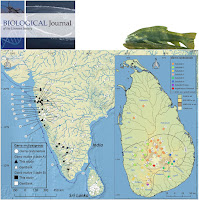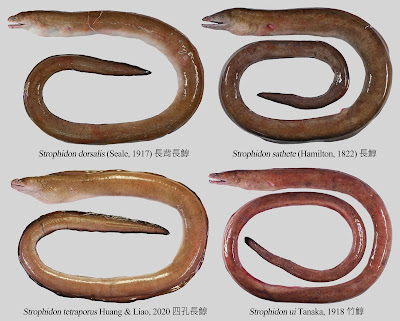 |
| Tricalysia elmar Cheek in Cheek, Causon, et al., 2020. |
Abstract
Background and aims – This paper reports a further discovery in the context of a long-term botanical survey in the Cross River-Sanaga interval of west-central Africa, focussing on species discovery and conservation.
Methods – Normal practices of herbarium taxonomy have been applied to study the material collected. The relevant collections are stored in the Herbarium of the Royal Botanic Gardens, Kew, London and at the Institute of Research in Agronomic Development – National Herbarium of Cameroon.
Key results – Species new to science recently discovered from the cloud (submontane) forests of the Cameroon Highlands in Cameroon are reviewed. Most of these species are rare, highly localised, and threatened by habitat destruction. These discoveries increase the justification for improved conservation management of surviving habitat. Tricalysia elmar Cheek (Coffeeae-Rubiaceae) is described as an additional cloud forest species new to science. Its taxonomic position is discussed, and it is compared with similar species of the genus. Restricted so far to four locations, Mt Kupe, Bali Ngemba, Lebialem and Nta Ali, its conservation status is assessed as Endangered (EN B1+2ab(iii)) according to the 2012 criteria of IUCN.
Keywords: accrescent floral disc, conservation, Cross-Sanaga Interval, submontane forest, Tropical Important Plant Areas
Tricalysia elmar Cheek, sp. nov.
Diagnosis – Similar to Tricalysia ferorum Robbr. of Sect. Probletostemon (K.Schum.) Robbr. in the large, conspicuous, dome-like accrescent disc in the fruit, differing in the entire, united distal calyculus (distal bracts not free) and the glabrous style and anthers (not hairy); differing from all species of Sect. Tricalysia in the dome-like accrescent disc in the fruit.
Etymology – Named (indeclinable word in apposition; art. 23.1 and 23.2 of the code, Turland et al. 2018) for Prof. Elmar Robbrecht (1946–) of the Meise Botanic Garden and Herbarium, Belgium, the noted global specialist in Rubiaceae who monographed and laid the systematic foundations for all future research on the genus Tricalysia.
Martin Cheek, Isla Causon, Barthelemy Tchiengue and Eden House. 2020. Notes on Tricalysia elmar sp. nov. (Rubiaceae, Coffeeae), and Cloud Forest of the Cameroon Highlands. Plant Ecology and Evolution. 153(1); 167-176. DOI: 10.5091/plecevo.2020.1661














































